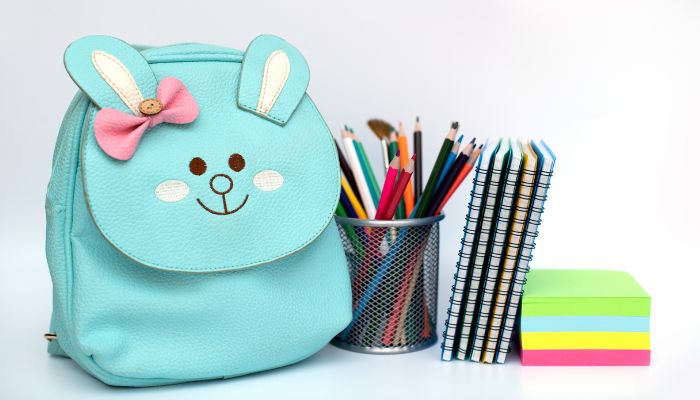
In the daily lives of students, school bags play an indispensable and crucial role. They are not merely containers for books and stationery; they carry the well-being of students, ensuring their health and comfort as they navigate through their school days. A good school bag is like a reliable companion, supporting students in their academic journey. Now, let’s embark on an exploration of the intricate production process behind these essential items. The production process of student school bags generally involves the following steps:
Design and Planning
- Concept Development: Designers first determine the style, function, and target audience of the school bag. They consider factors such as fashion trends, ergonomic requirements for students, and storage needs for books, stationery, and other items.
- Sketching and Rendering: Based on the concept, detailed sketches are drawn, which are then converted into digital renderings. These visual representations show the appearance, dimensions, and features of the school bag, including pockets, zippers, and straps.
- Material Selection: Select appropriate materials according to the design requirements. Common materials for school bags include nylon, polyester, canvas, and leather. These materials are chosen for their durability, water resistance, and comfort.
Pattern Making
- Template Creation: After the design is finalized, pattern makers create templates for each part of the school bag. This includes the main body, pockets, straps, and any other components. The templates are carefully measured and cut to ensure a proper fit when assembled.
- Sample Making: A sample school bag is then made using the patterns. This sample is used to test the design, functionality, and overall quality. Any necessary adjustments to the patterns or design are made at this stage.
Material Cutting
- Laying Out the Materials: The selected materials are laid out flat on a cutting table. Care is taken to ensure that the grain and direction of the fabric are consistent.
- Cutting: Using sharp cutting tools or automated cutting machines, the materials are cut according to the patterns. Precise cutting is crucial to ensure that all parts fit together correctly during assembly.
- Sorting and Marking: The cut pieces are sorted and marked to indicate their position and orientation in the final product. This helps in the assembly process and reduces the risk of errors.
Sewing and Assembly
- Stitching the Components: The cut pieces are sewn together using industrial sewing machines. Different types of stitches are used depending on the strength and appearance requirements of each part. For example, double stitching is often used for stress points such as the straps and seams.
- Attaching Pockets and Accessories: Pockets, zippers, buckles, and other accessories are attached to the main body of the school bag. Special attention is paid to ensuring that the zippers operate smoothly and that the accessories are securely fastened.
- Assembling the Straps: The shoulder straps and any other carrying straps are sewn onto the bag. Padding may be added to the straps for comfort, especially for heavier school bags.
Quality Control
- Inspection of Stitching: Each school bag is carefully inspected for the quality of stitching. Loose threads, uneven stitches, or weak seams are identified and corrected.
- Testing of Zippers and Accessories: The functionality of zippers, buckles, and other accessories is tested. They should open and close smoothly, and the buckles should fasten securely.
- Checking for Dimensions and Shape: The dimensions and shape of the school bag are verified to ensure that they match the design specifications. Any deformities or irregularities are addressed.
Finishing
- Trimming and Cleaning: Excess threads and fabric are trimmed from the school bag. The bag is then cleaned to remove any dirt, debris, or markings that may have accumulated during the production process.
- Adding Labels and Branding: Labels indicating the brand, size, care instructions, and other information are attached to the school bag. Branding elements such as logos may be embroidered, printed, or embossed on the bag.
Packaging and Distribution
- Packaging: The finished school bags are individually packaged in plastic bags or boxes to protect them during transportation and storage. The packaging may also include additional marketing materials such as brochures or tags.
- Warehousing and Distribution: The packaged school bags are stored in a warehouse until they are ready to be shipped to retailers, wholesalers, or directly to customers. They are then distributed through various channels to reach the end-users.



